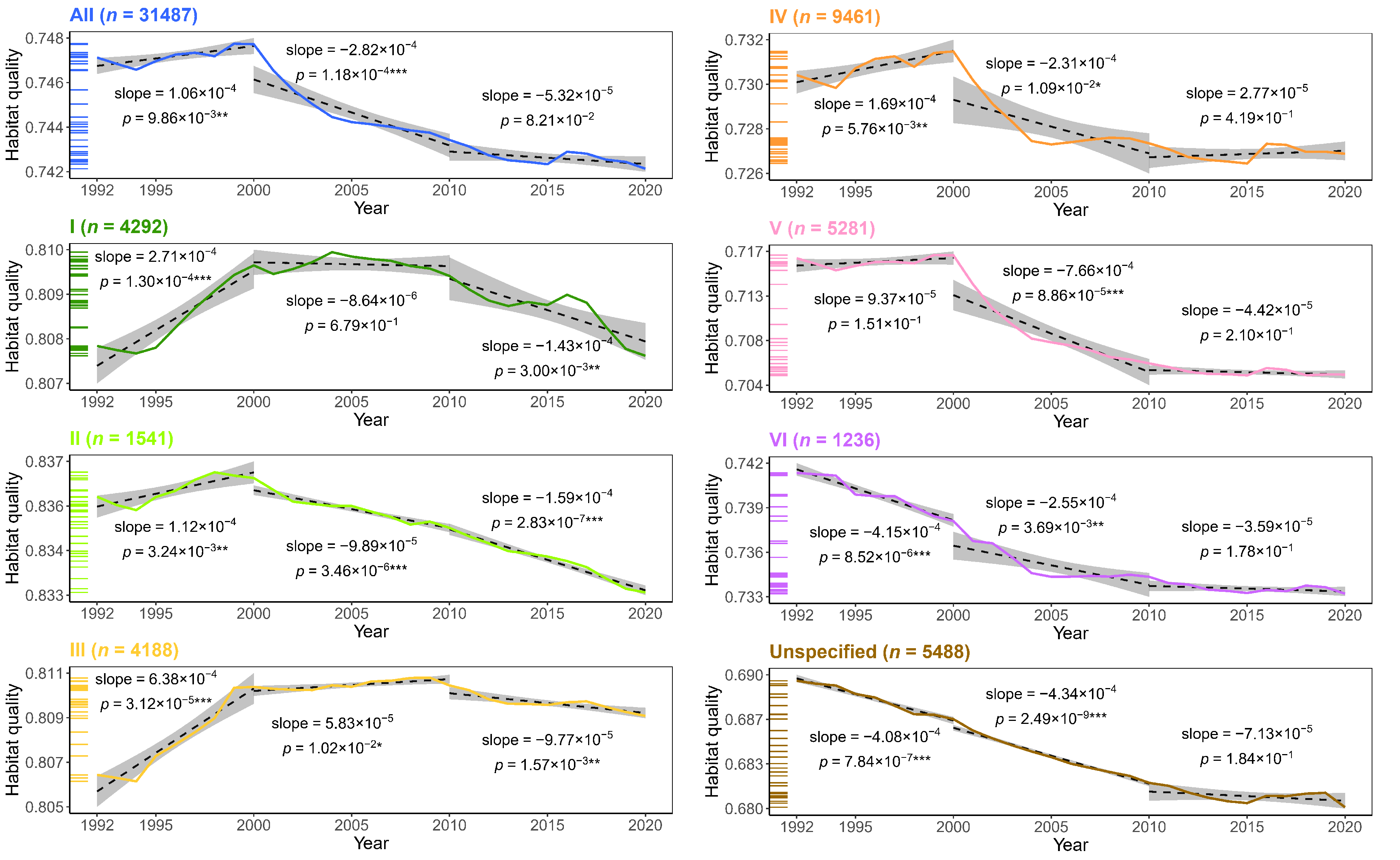Protected areas, typically considered a cornerstone of conservation programs, play a fundamental role in protecting natural areas and biodiversity. Human-driven land-use and land-cover (LULC) changes lead to habitat loss and biodiversity loss inside protected areas, impairing their effectiveness. Habitat quality and habitat degradation can reflect the impact of LULC changes on habitat. However, the global dynamics of habitat quality and habitat degradation in protected areas remain unclear.
To address the above problem, Yu Le’s Research Group of the Department of Earth System Science (DESS), Tsinghua University used global annual remotely sensed data and a habitat quality model to disclose the global dynamics of habitat quality and degradation of terrestrial protected areas from 1992 to 2020, quantifying habitat degradation caused by cities and agriculture, and exploring the relationship between habitat degradation trends and protected area characteristics, biophysical factors, and socioeconomic factors.
It is found that the average habitat quality of the global terrestrial protected areas improved from 1992 to 2000, decreased substantially from 2001 to 2010, and stabilized from 2011 to 2020 (Figure 1). Habitat degradation in the recent three decades was attributed primarily to nonirrigated cropland (62%) and urbanization (27%) in 2020. (Figure 2)

Figure 1 Temporal trends in average habitat quality among protected areas from 1992 to 2020

Figure 2 Habitat degradation caused by different sources of threats from 1992 to 2020
The acceleration of habitat degradation is related to the increase of altitude, per capita GDP and population density as well as the decrease of agricultural suitability (Figure 3). The research finds that remote sensing monitoring based on key variables of biodiversity, such as habitat quality and habitat degradation, can effectively support the rapid quantitative evaluation of biodiversity conservation effectiveness in global nature reserves, playing a significant role in promoting the implementation and monitoring of the “Kunming-Montreal Global Biodiversity Framework”, conducive to biodiversity conservation and sustainable management globally.

Figure 3 Effects of related factors on the average rate of habitat degradation of protected areas
The above research results have been published in Conservation Biology in a paper titled "Trends in Habitat Quality and Habitat Degradation in Territorial Protected Areas". Zhao Jianqiao, a Ph.D. graduate from the DESS, Tsinghua University, is the first author of the paper, and Associate Professor Yu Le of the DESS, Tsinghua University is the corresponding author of the paper. Co-authors include Tim Newbold, a researcher from University College London, and Chen Xin, an associate professor from Shanxi University. The research work is supported by the National Key R&D Program, the China Scholarship Council and the Independent Research Program of Tsinghua University.
https://conbio.onlinelibrary.wiley.com/doi/full/10.1111/cobi.14348
Written by Zhao Jianqiao